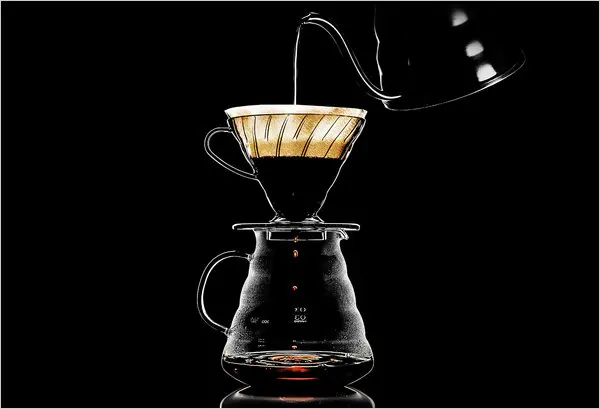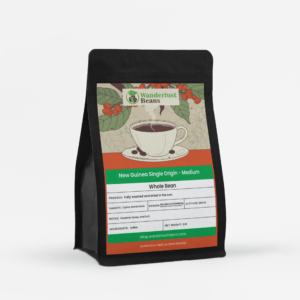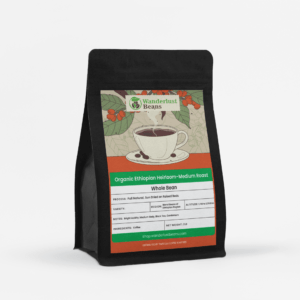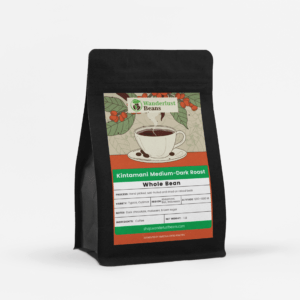
The Art of Japanese Pour-Over Coffee
Introduction
If you’re a coffee lover, you know that there are many ways to make a great cup of coffee. One method that has gained popularity in recent years is the Japanese pour-over method. This method is a manual brewing technique that involves pouring hot water over coffee grounds in a slow and steady manner. In this blog post, we’ll explore the art of Japanese pour-over coffee and share tips on how to brew the perfect cup.
History of the Japanese Pour-Over Method
The Japanese pour-over method, also known as “Hario V60,” is a brewing method that was invented in Japan in the 1940s. The method involves using a cone-shaped dripper that has a single large hole at the bottom. The coffee grounds are placed in a paper filter, and hot water is poured over the grounds in a circular motion.
The method became popular in the specialty coffee industry in the 2000s and has since gained a dedicated following of coffee enthusiasts. Today, many coffee shops around the world serve pour-over coffee using the Japanese pour-over method.
The Equipment Needed for Japanese Pour-Over Coffee
Before you can start brewing Japanese pour-over coffee, you’ll need to gather the necessary equipment. Here’s what you’ll need:
Coffee beans:
Choose high-quality coffee beans that are freshly roasted. Look for beans that have a medium to light roast, as darker roasts can overpower the delicate flavors of the pour-over method.
Grinder:
You’ll need a good coffee grinder to grind the beans to the correct size. For the Japanese pour-over method, a medium-fine grind is recommended.
Pour-over dripper:
The Hario V60 dripper is the most popular dripper for the Japanese pour-over method. It’s a cone-shaped dripper that comes in various sizes.
Paper filters:
Choose high-quality paper filters that fit the size of your pour-over dripper. The paper filters will help to remove any impurities and oils from the coffee.
Kettle:
You’ll need a kettle with a long spout to pour the hot water over the coffee grounds in a slow and steady manner.
How to Brew Japanese Pour-Over Coffee
Now that you have all the equipment, it’s time to brew your first cup of Japanese pour-over coffee. Here’s how to do it:
Step 1: Heat the Water
Boil the water and let it cool for 30 seconds to 1 minute. The ideal water temperature for the Japanese pour-over method is between 195°F and 205°F.
Step 2: Rinse the Filter and Preheat the Dripper
Place the paper filter in the pour-over dripper and rinse it with hot water. This will help to remove any paper taste and preheat the dripper.
Step 3: Grind the Coffee Beans
Grind the coffee beans to a medium-fine consistency.
Step 4: Add the Coffee Grounds
Add the coffee grounds to the rinsed filter in the pour-over
dripper. Use a ratio of 1:16 (one part coffee to 16 parts water) for your coffee and water. For example, if you’re using 20 grams of coffee, you’ll need 320 grams of water.
Step 5: Bloom the Coffee
Pour enough hot water over the coffee grounds to wet them, making sure to saturate them evenly. This is called “blooming” and allows the coffee to release carbon dioxide, which enhances the flavor of the coffee. Let the coffee bloom for 30 seconds.
Step 6: Pour the Water
Pour the hot water over the coffee grounds in a slow and steady circular motion, starting from the center and working your way outwards. Keep the water level about ¼ inch below the top of the filter. Pour in intervals, letting the water level drop by ¼ inch before adding more water. The entire brewing process should take about 3 minutes.
Step 7: Serve and Enjoy
Once the coffee has finished brewing, remove the dripper and discard the used filter. Serve the coffee in your favorite mug and enjoy the rich, complex flavors of Japanese pour-over coffee.
Tips for Brewing the Perfect Cup of Japanese Pour-Over Coffee
Brewing the perfect cup of Japanese pour-over coffee takes practice and patience. Here are some tips to help you master the art of Japanese pour-over coffee:
Use high-quality coffee beans:
Choose coffee beans that are freshly roasted and have a medium to light roast. Avoid using beans that are too dark, as they can overpower the delicate flavors of the pour-over method.
Grind the coffee beans correctly:
Grind the coffee beans to a medium-fine consistency. Too coarse, and the coffee will be weak and under-extracted. Too fine, and the coffee will be bitter and over-extracted.
Use the correct water temperature:
The ideal water temperature for the Japanese pour-over method is between 195°F and 205°F. Use a thermometer to ensure the water is at the correct temperature.
Pour the water in a slow and steady manner:
Pour the hot water over the coffee grounds in a slow and steady circular motion. Keep the water level about ¼ inch below the top of the filter and pour in intervals, letting the water level drop by ¼ inch before adding more water.
Experiment with different coffee beans and brewing methods:
Try different types of coffee beans and experiment with different brewing methods to find the perfect cup of Japanese pour-over coffee that suits your taste.
Conclusion
The Japanese pour-over method is a manual brewing technique that allows you to brew a rich, complex cup of coffee that highlights the unique flavors and aromas of high-quality coffee beans. With the right equipment and technique, you can brew the perfect cup of Japanese pour-over coffee that will delight your senses and impress your coffee-loving friends.
So, grab your pour-over dripper, some high-quality coffee beans, and start brewing your own Japanese pour-over coffee today. You won’t be disappointed!







